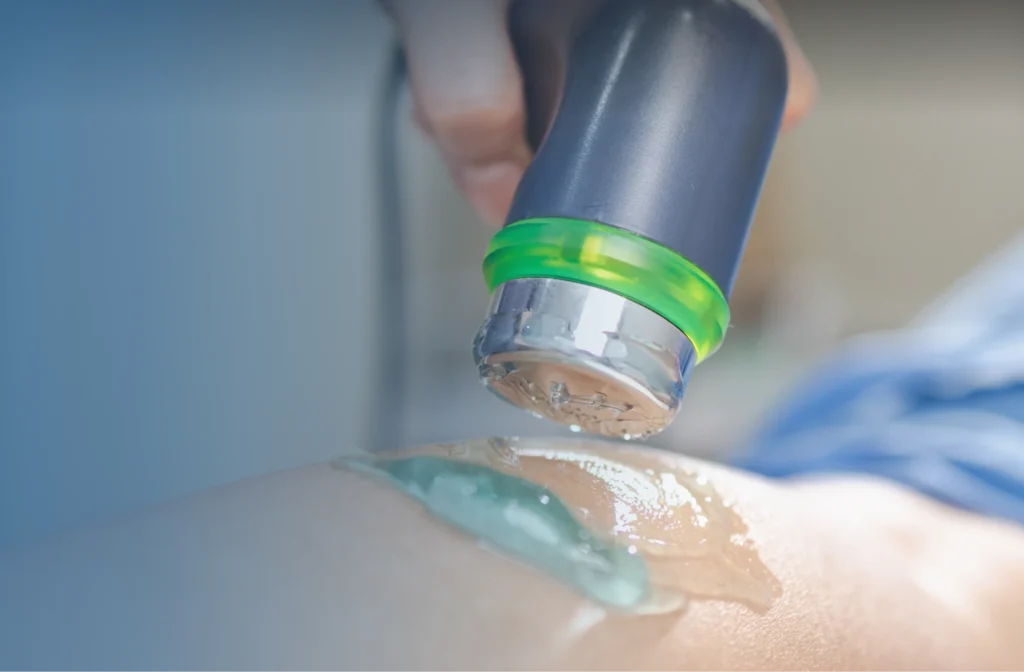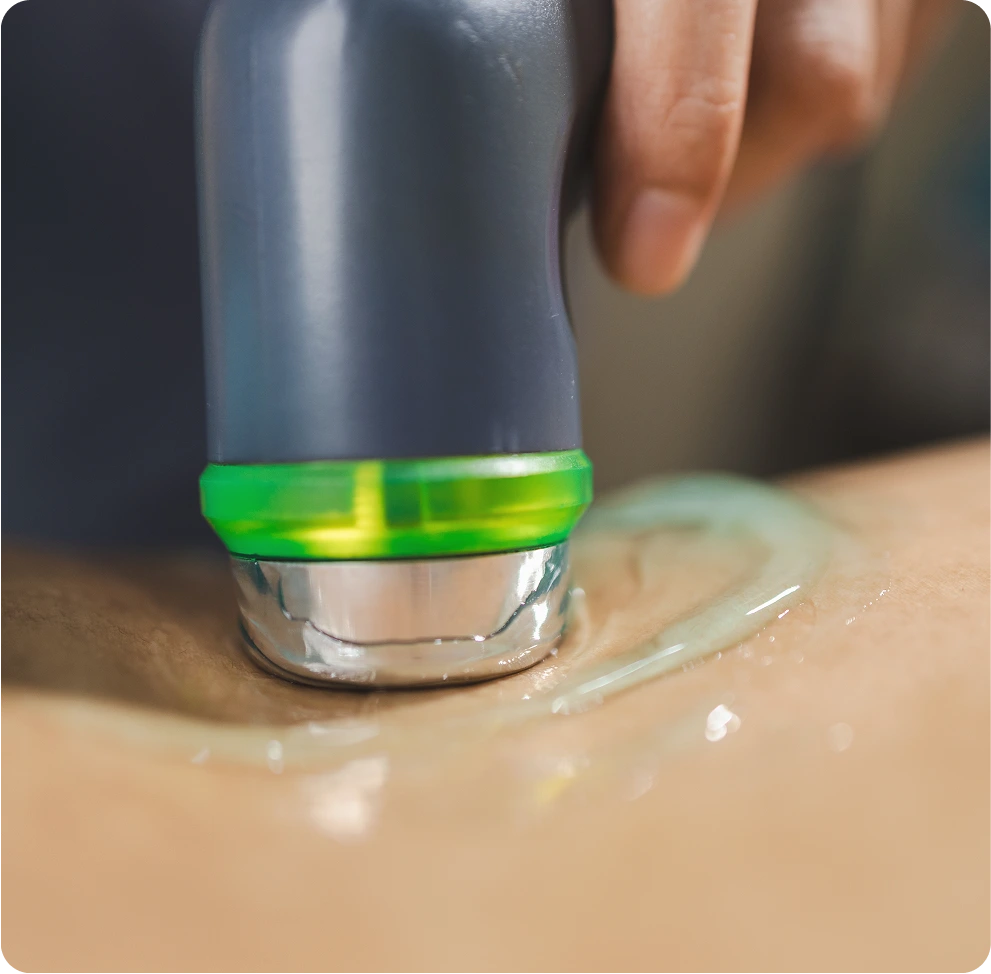Our chiropractic clinic in Tampa offers soundwave therapy designed to address persistent pain and chronic conditions that traditional treatments sometimes fail to resolve. Many patients face challenges such as stiffness, limited mobility, and lingering discomfort that disrupt daily life and activities. These issues often stem from underlying tissue damage, scar formation, or poor circulation, which require targeted intervention. Soundwave therapy offers a targeted approach to stimulate healing where other methods may fall short. The treatment supports gradual restoration, helping individuals regain function and comfort over time.

Table of Contents

Soundwave therapy, also known as extracorporeal shockwave therapy (ESWT), is a non-invasive treatment that uses high-frequency sound waves to target specific areas of the body. These acoustic waves penetrate deep into the tissue, stimulating a biological response. One of the key effects of this therapy is increased blood flow to the treated area, which plays a role in the body’s natural healing process. The stimulation also encourages the release of growth factors that support tissue regeneration. A typical session lasts about 15 to 20 minutes, depending on the condition being addressed.
Soundwave therapy is often used to address bursitis, a condition involving inflammation of the fluid-filled sacs that cushion joints. In aging areas of the body, where tissue resilience and circulation decline, the therapy can help stimulate function and improve overall well-being. The targeted sound waves can reach deep into the inflamed bursa, promoting a healing response without the need for surgery. By reactivating these aging areas, the therapy encourages cellular repair over time. This makes it a practical option for chronic bursitis in the shoulder, hip, or knee.
Heel spurs are calcium deposits that build up on the underside of the heel bone, often linked to long-term strain on the foot. Soundwave therapy focuses high-frequency sound waves on the affected area to help break down the buildup. While the spurs themselves are bony, the surrounding soft tissue often becomes irritated, contributing to discomfort. Treating both the spur and nearby inflammation may reduce tension and stiffness over time.
Tennis elbow, or lateral epicondylitis, results from repetitive strain and tiny tears in the forearm tendons. When scar tissue prevents elasticity in the tendon, it limits normal movement and causes ongoing pain. Soundwave therapy delivers controlled energy to the site, promoting tissue regeneration and turnover. This helps stimulate biological repair mechanisms in an otherwise stiff, fibrotic area. Over time, it may help restore flexibility and improve overall arm function.
Following an acute or repetitive injury, soundwave therapy can be used to support tissue recovery and healing. One of its mechanisms involves stimulating the formation of new blood vessels in damaged areas. This improved vascularization enhances oxygen and nutrient delivery, which is essential for healing. By boosting cellular activity, the therapy aids the body’s natural regenerative process. It is commonly used after sports injuries, muscle tears, or bone stress.
Plantar fasciitis occurs when the thick band of tissue along the bottom of the foot becomes inflamed and irritated. Often caused by poor blood flow and repetitive strain, the root cause of this condition is micro-damage that doesn’t heal properly. Soundwave therapy addresses this issue by enhancing circulation and promoting tissue repair. The energy pulses stimulate metabolic activity in the affected area, supporting long-term relief. This approach is frequently used for persistent heel pain that hasn’t responded to rest or stretching.
Tendinitis is the inflammation of a tendon, typically caused by overuse or repetitive motion. Soundwave therapy directs energy to the inflamed site, encouraging healing in both soft tissue and surrounding structures. By interacting with existing blood vessels, the treatment can stimulate better circulation and nutrient exchange. This may reduce inflammation and support collagen regeneration over time. It is often applied to areas like the shoulder, Achilles tendon, or wrist.
Your appointment begins with a consultation with our highly trained medical provider, Dr. Suzi, who will evaluate your condition and review your symptoms. She will determine whether soundwave therapy is the right fit based on your medical history and goals. This step ensures that each treatment plan is tailored to the individual needs of our patients.

Following soundwave therapy, proper aftercare can support your body’s healing response and enhance the results. These simple guidelines help maintain progress and encourage the formation of healthy tissue.
Soundwave therapy is used across a wide range of musculoskeletal and soft tissue conditions. It is commonly recommended when other conservative treatments have not provided sufficient relief. The following groups are typical candidates:

Many patients seek soundwave therapy as part of a targeted approach to managing pain and restoring function. It fits seamlessly into both rehabilitation plans and ongoing wellness routines. The benefits below highlight why this treatment has become a preferred option:

The cost of soundwave therapy in Tampa ranges from $100 to $200 per session. Prices may vary depending on the provider, the area being treated, and the number of sessions needed. Most patients undergo multiple sessions to achieve optimal results, which can impact the total cost. To get an accurate estimate tailored to your needs, it’s best to schedule a consultation.
At our clinic, soundwave therapy isn’t just a service—it’s part of a thoughtful, personalized healing experience led by Dr. Suzi C. Desai. With advanced chiropractic training and a compassionate, multilingual approach, Dr. Suzi blends proven techniques with a deep understanding of individual needs. Her global perspective and expertise in spinal and extremity care enable more precise and effective treatments. From the moment you walk in, you’ll be treated like family, with expert care tailored to your condition and lifestyle. This combination of clinical skill and genuine connection is what sets our soundwave therapy apart.

Yes, soundwave therapy is a non-invasive treatment that is generally considered safe when performed by a qualified provider, such as Dr. Suzi. This procedure uses high- or low-intensity shockwaves to stimulate tissue repair and support healing without the need for surgery. As blood vessels develop in the targeted area, the body’s natural recovery process is enhanced with minimal risk.
Before starting soundwave therapy, it’s essential to inform your provider about any existing health conditions. This treatment may not be suitable for individuals with uncontrolled high blood pressure or severe heart disease. A consultation will help determine whether soundwave therapy is appropriate for your specific situation.